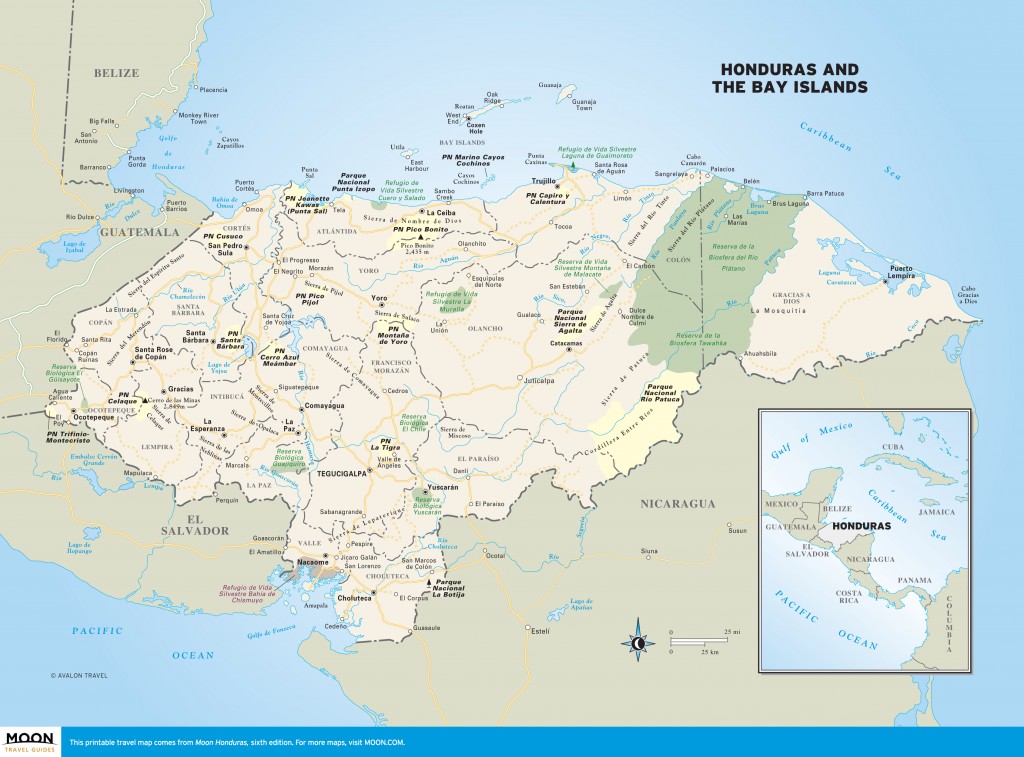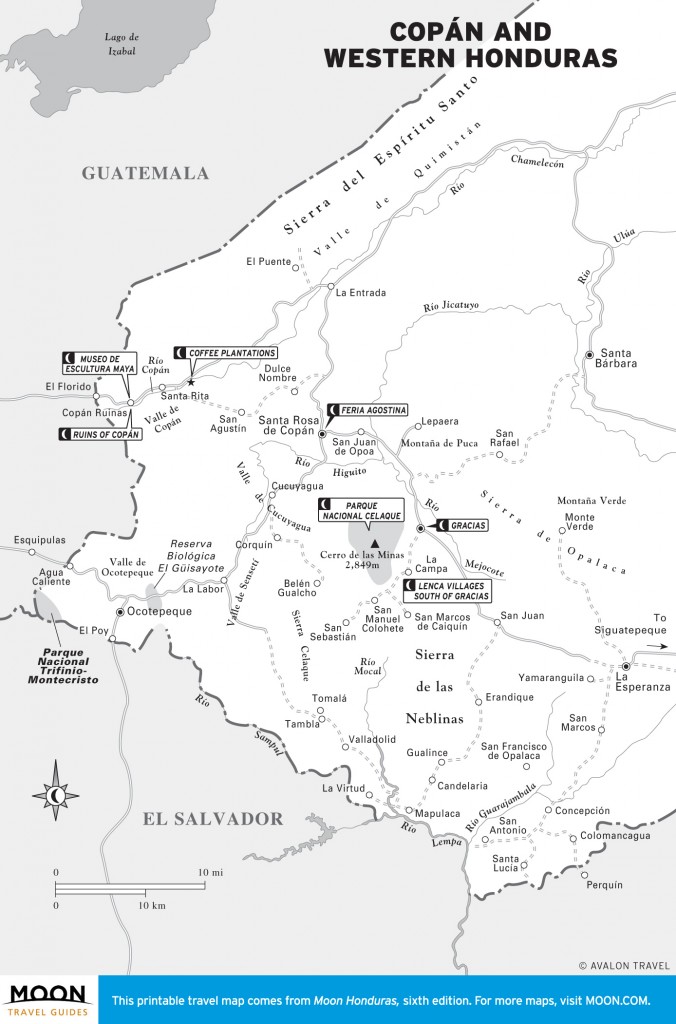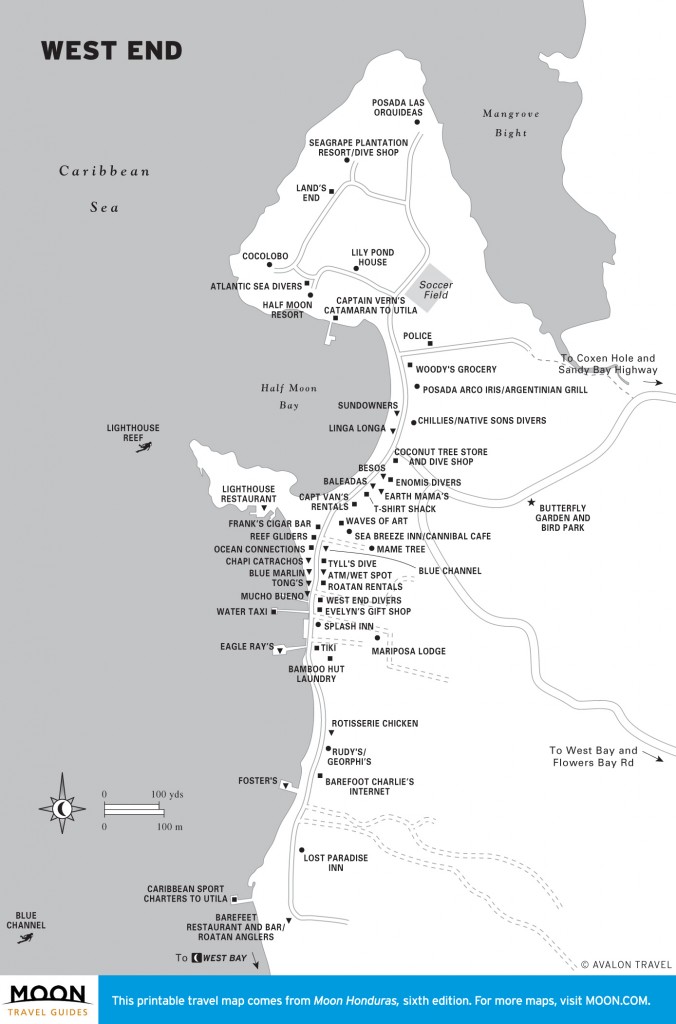
Mountains at dusk in Tegucigalpa. Photo by Lauri Väin licensed Creative Commons Attribution.
Honduras packs several personalities into a country the size of Virginia, boasting fantastic natural beauty of sea and mountains, cultural richness, and a relaxing tropical vibe similar to Belize and Costa Rica, waiting to be discovered along a far less-trodden path. While each region offers unique experiences, the warm, easy-going attitude of the catrachos, as Hondurans call themselves, is found everywhere.The Bay Islands are Caribbean jewels of palm trees and sandy beaches lapped by turquoise waves, ringed by some of the finest coral reef in the hemisphere. It’s a scuba diver’s paradise, but even neophyte snorkelers can easily wade into an underwater world of angelfish, coral, and sponge. Back on the mainland, the Mayan ruins of Copán beguile travelers with their profusion of statues and glyphs carved in stone. Art and astronomy flourished in this first-millennium city, a New World Athens. Nearby Copán Ruinas, Santa Rosa de Copán, and Gracias offer glimpses into small-town Honduran life and are launching points for exploring the mountainous countryside.A different side of Honduras is revealed in the north coast jungles. Search for a shy manatee or quiet crocodile in the shimmering lagoons. Raft down the Río Cangrejal or go for a hike in the verdant Parque Nacional Pico Bonito, then retire to one of the nearby ecolodges. Farther east lies the Mosquitia — Honduras’s fabled Mosquito Coast, the country’s least accessible region. Intrepid adventurers are rewarded by miles of undisturbed tropical rainforest, home to toucans, parakeets, troops of monkeys, and even the occasional jaguar, as well as opportunities for community-based ecotourism.
Rhythms speed up in San Pedro Sula and Tegucigalpa, the business and political capitals, respectively. The list of tourist attractions may be short in these bustling cities, but that of eating and entertainment options is long. The two metropolises can also serve as bases for exploring colonial towns and natural attractions in the surrounding regions. Bird-spotting at Honduras’s largest lake, Lago de Yojoa, and swimming at its highest waterfall, Pulhapanzak Falls, as well as the golden beaches of Tela, Omoa, and Puerto Cortés, make for easy day trips from San Pedro. Day-trippers from Tegucigalpa can take their pick of colonial towns like Valle de Ángeles, or head to the Golfo de Fonseca for a swim in the Pacific.
While each region offers unique experiences, the warm, easy-going attitude of the catrachos, as Hondurans call themselves, is found everywhere. Come to Honduras prepared to relax. Leave the stress behind when you get off the plane, and let yourself slip into the blissful contentment that has captivated many a visitor.
Excerpted from the Sixth Edition of Moon Honduras & the Bay Islands.

Honduras

Copán and Western Honduras

West End